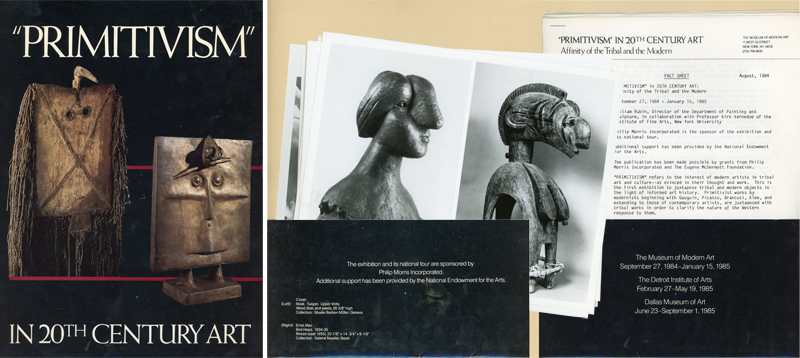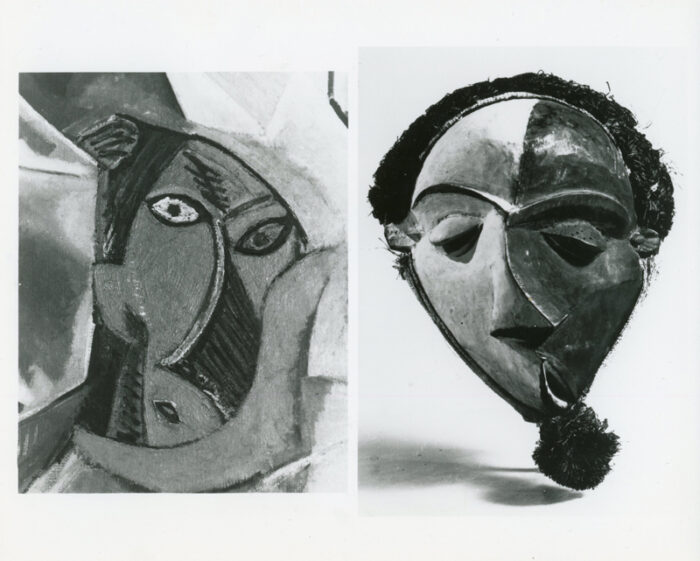
The stuffed press kit for the Museum of Modern Art ‘s 1984 blockbuster exhibition “Primitivism” in 20th Century Art proudly boasted that the exhibition was the first to “juxtapose modern and tribal objects in the light of informed art history.” While the organizers thought of themselves as being scholarly and objective, the fact that they put quotation marks around the word “Primitivism” in the exhibition title hints that they also knew they were treading on dangerous ground. Unintentionally the show laid bare the Eurocentric prejudices at the core of art institutions like MoMA. Now, 35 years later, we can see that “Primitivism” in 20th Century Art was an early wake-up call alerting museums to issues of diversity and multiculturalism that are still being grappled with today.
Amidst the negative criticism of the MoMA exhibition, one article still stands out: Thomas McEvilly’s “Doctor Lawyer Indian Chief: “‘Primitivism’ in 20th Century Art,” in the November 1984 issue of Artforum. Starting with the observation that the “primitive” works in the exhibition were not given dates, context or meaning, McEvilly concluded that the exhibition showed a “Western egotism still as unbridled as in the centuries of colonialism and souvenirism.” A letter to the magazine by co-curator William Rubin explaining that the goal of the exhibition was to tell a specific story about Western, not tribal art, only underscored McEvilly’s point that art institutions were operating from a limited cultural perspective.












